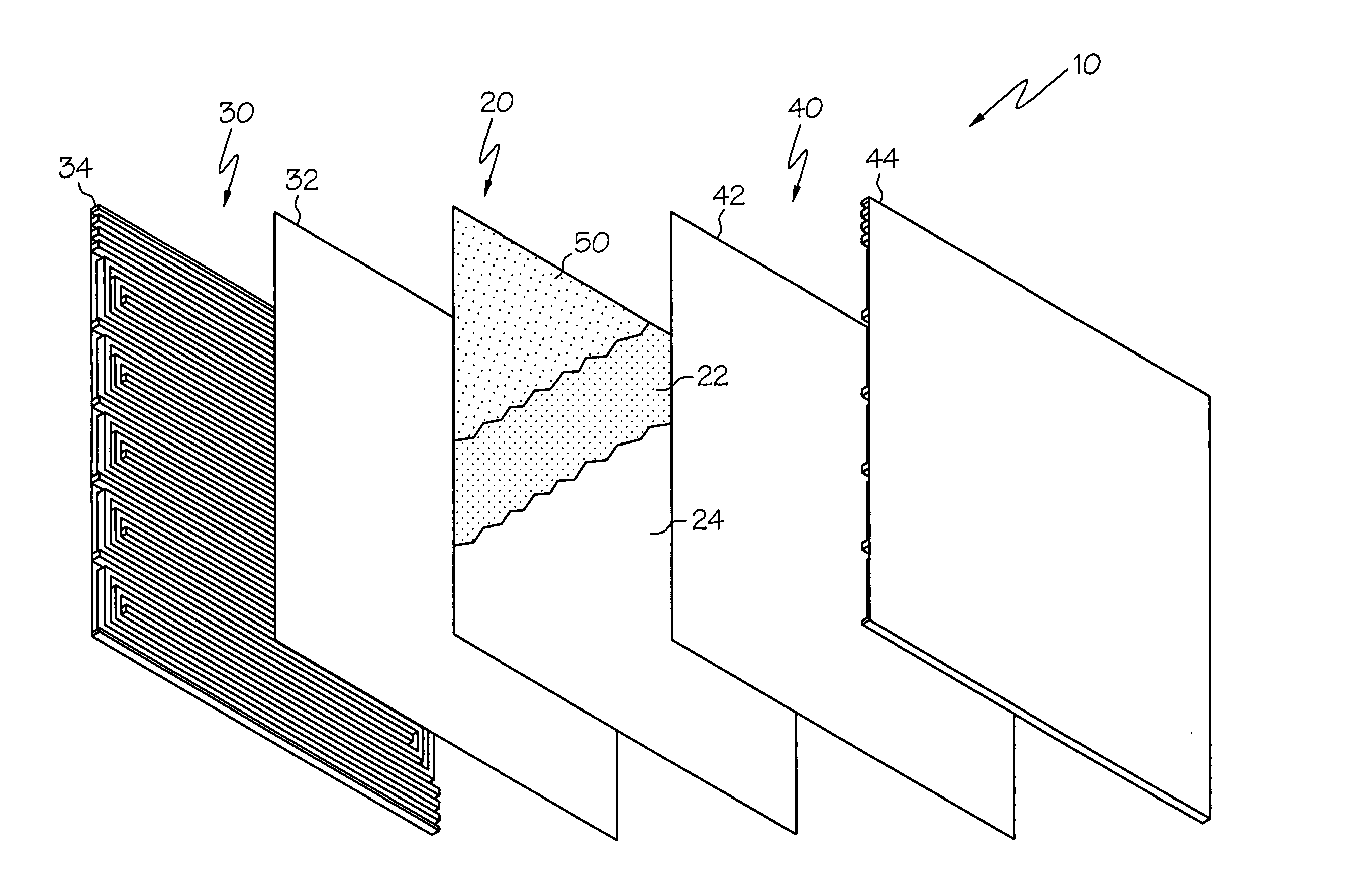Reinforced membrane electrode assembly
a membrane electrode and reinforcement technology, applied in the field of electrochemical conversion cells, can solve the problems of low crossover rate, low gas crossover rate, localized heating and integrity loss in the membrane, etc., and achieve the effect of reducing crack driving force, crack open area, and reducing reaction gas crossover leakag
- Summary
- Abstract
- Description
- Claims
- Application Information
AI Technical Summary
Benefits of technology
Problems solved by technology
Method used
Image
Examples
Embodiment Construction
[0019] Referring to the exploded view of FIG. 1, noting that the general construction and operation of electrochemical conversion cells are beyond the scope of the present invention and may be gleaned from any suitable source covering electrochemical conversion cells, some typical components of an electrochemical conversion cell 10 are illustrated. Specifically, and not by way of limitation, an electrochemical conversion cell 10 according to the present invention is configured to convert first and second reactants R1, R2, to electrical energy. The illustrated cell 10 comprises a membrane electrode assembly 20 and first and second flowfield portions 30, 40 disposed on opposite sides of the membrane electrode assembly 20.
[0020] Referring to FIG. 2, although the present invention is not limited to a particular class of membrane electrode assemblies, for the purposes of illustration, it is noted that typical membrane electrode assemblies 20 comprises a catalytic anode 22 formed on a fi...
PUM
| Property | Measurement | Unit |
|---|---|---|
| electrical energy | aaaaa | aaaaa |
| degree of operational stress | aaaaa | aaaaa |
| stress | aaaaa | aaaaa |
Abstract
Description
Claims
Application Information
 Login to View More
Login to View More - R&D
- Intellectual Property
- Life Sciences
- Materials
- Tech Scout
- Unparalleled Data Quality
- Higher Quality Content
- 60% Fewer Hallucinations
Browse by: Latest US Patents, China's latest patents, Technical Efficacy Thesaurus, Application Domain, Technology Topic, Popular Technical Reports.
© 2025 PatSnap. All rights reserved.Legal|Privacy policy|Modern Slavery Act Transparency Statement|Sitemap|About US| Contact US: help@patsnap.com



